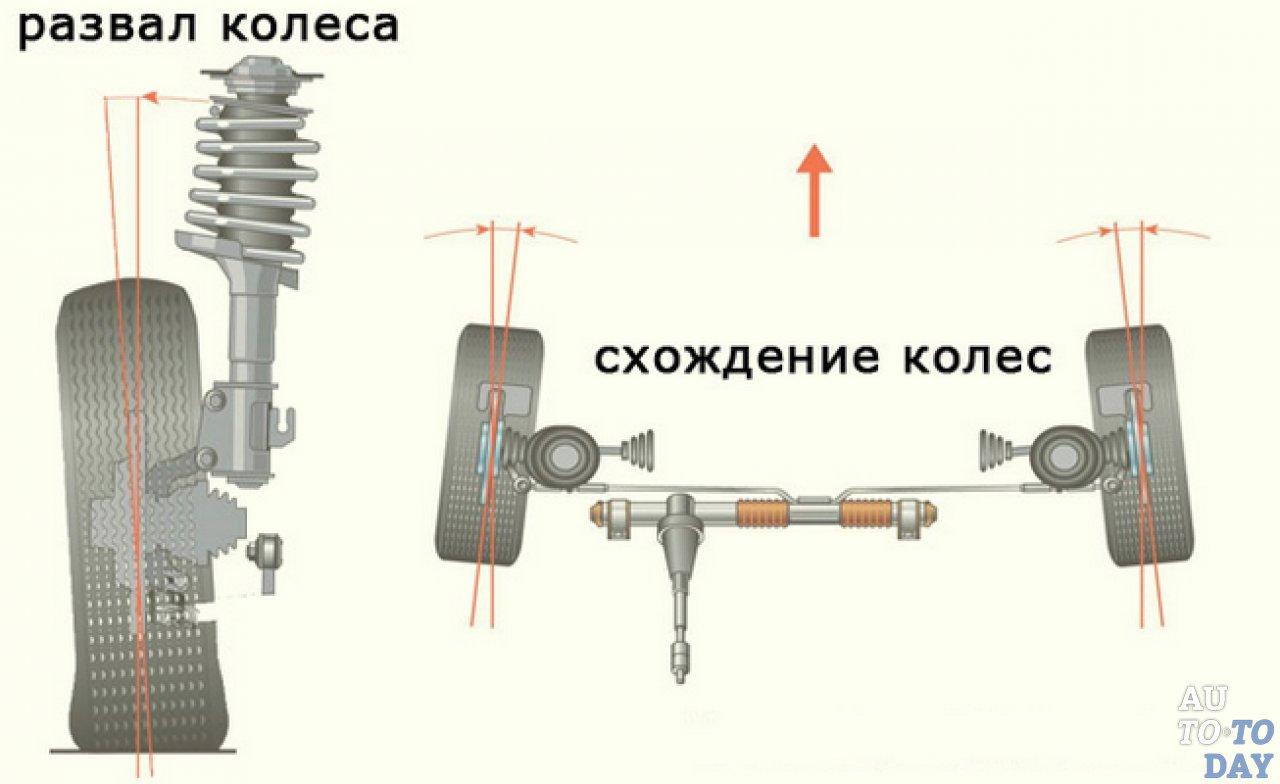
Car wheel alignment. What does it affect? When should convergence be corrected?
Content
 The geometry of the wheels has a huge impact on the behavior of the car when driving and its handling, so car manufacturers determine the optimal values for a given model at the design stage. As it turned out, even a slight deviation from the factory settings can affect our comfort and drastically reduce the level of security. Hence the need to regularly check and, if necessary, adjust the components of the steering system. Convergence is one of the key parameters that affect both the stability of the car on straight sections and the smoothness of cornering.
The geometry of the wheels has a huge impact on the behavior of the car when driving and its handling, so car manufacturers determine the optimal values for a given model at the design stage. As it turned out, even a slight deviation from the factory settings can affect our comfort and drastically reduce the level of security. Hence the need to regularly check and, if necessary, adjust the components of the steering system. Convergence is one of the key parameters that affect both the stability of the car on straight sections and the smoothness of cornering.
What is a collapse?
Toe-in is one of the main elements of suspension geometry, in addition to camber and lead angles and camber. This refers to how the wheels are aligned on the same axle. If we looked at the car from above, it would turn out that in most cases they are not parallel to each other, which helps to balance the forces that arise during movement. This setting is closely related to the correct functioning of the steering system.
We are dealing primarily with two situations. Convergence is when the left and right wheels are facing the center of the car, i.e. the toe angle is positive. In the case of a divergence, the wheels look outward, and the toe angle is negative. If the circles were parallel, we would talk about zero convergence. Each of the above situations has its advantages and disadvantages, especially in terms of drive type, so they are determined separately for each car model.
See also: How to save fuel?
As a rule, wheel alignment improves the stability of the car when driving on straight sections. Then the steering wheel tends to straighten. Divergence, on the other hand, will be slightly better for cornering, but then you will have to adjust the track often on straight sections. Manufacturers adjust these parameters in such a way as to obtain a compromise, which means the maximum possible maneuverability.
What is the effect of incorrect wheel alignment?
Improper use of the vehicle, replacement of steering system components, or even driving into a pothole can result in a misalignment. What can this lead to? First of all, there is a problem with maintaining the direction of movement, which directly affects traffic safety.
On the other hand, toe values that do not match the manufacturer's conclusions will lead to faster wear of the suspension components as well as tires, which will lead to additional costs for the operation of the vehicle. A similar effect will be achieved by increasing rolling resistance, which will affect the amount of fuel consumed.
When does convergence need to be checked and corrected?
You should go for suspension and wheel diagnostics when you begin to feel one of the above symptoms. Toe-in should also be checked after replacing steering components, and also after buying a used car.
"It is recommended to carry out preventive checks, for example during seasonal tire changes. Going to the garage should be especially when we do not want new tires to lose their properties too quickly due to intensive and uneven wear of the tread. Thanks to this, the set will serve us much longer and better. Be sure to keep your tire pressure under control, though, because riding too low or too high can cause traction problems and affect tread condition, mistaking geometry problems.” explains Przemysław Krzekotowski, Partner Services Manager at Oponeo.pl.
Wheel alignment can be corrected by a specialist with a special device. It is not recommended to try to act on your own due to the high risk of measurement errors. Even the smallest deviation from the values specified by the vehicle manufacturer will have a significant impact on our vehicle.
See also: Third generation Nissan Qashqai